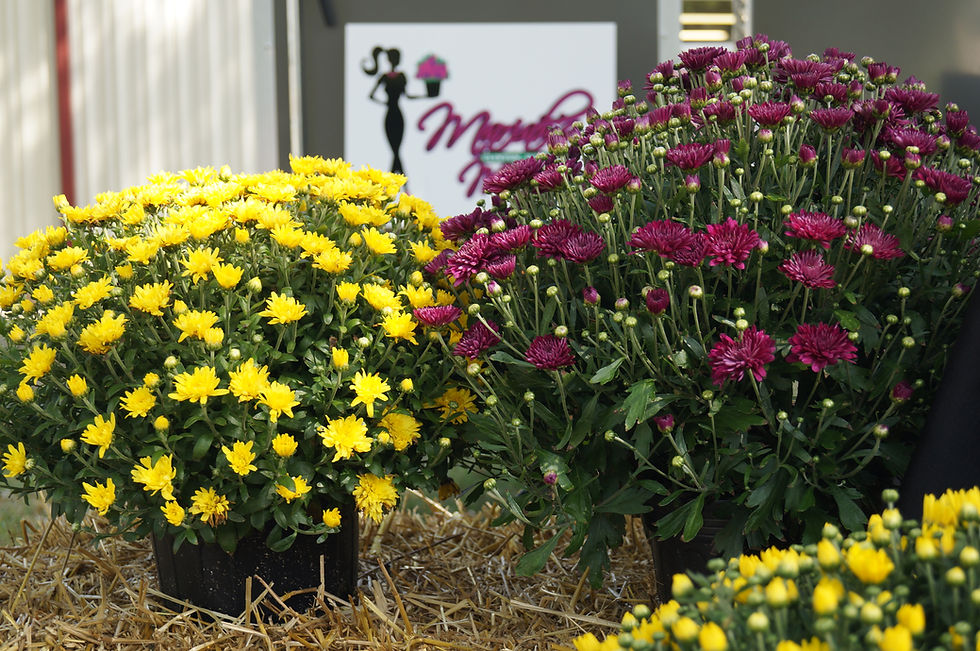
Are your mums hardy? Do your mums come back in the spring? Those are just two of many related questions we’re asked frequently and the answers have a number of factors to consider. To answer both questions: YES & YES! The mums we grow are perennial garden hardy. We select varieties for our growing zone here in Central Illinois. Many people look at mums as a seasonal decorating plant because they are used to replace some of the annuals that have served their purpose and if they survive the winter that is a bonus. There are no guarantees that when you plant mums in the fall they'll automatically come back in the spring. But if you follow our useful tips, you'll help improve their chances of coming back.
1. Plant your mums in the ground as early in the fall as possible. The later you plant them, the less likely they will come back in the spring.
2. Try to select mums that are not flowering. When they are flowering, their strength is going to the flowers rather than the roots, which need to be established before the first hard frost.
3. Choose a spot that gets at least six hours of sun a day. Plants that don't get enough sunlight will be tall and leggy and produce fewer, smaller flowers.
4. Also choose a spot near the house or one that is protected from the wind. Our Illinois, winter winds can be very hard on mums.
5. Mums thrive in well-drained soil. If the soil is too dense, add compost and prepare to a depth of 8-12 inches for best performance. Mums' roots are shallow, and they don't like competition. Plant mums about 1 inch deeper than they were in their pot, being careful with the roots as you spread them. The top of the root ball should be level with the surrounding soil when planting is finished.
6. Water newly planted mums thoroughly, and never let them wilt. After they are established, give mums about an inch of water per week. When bottom leaves look limp or start to turn brown, water more often. Avoid soaking the foliage, which encourages disease.
7. Prepare mums for winter after the first hard frost. Mulch up to 4 inches with straw or shredded hardwood. Fill in around the entire plant, spreading well between branches. Pinch or cut off dead blooms to clean up the plant, but leave branches intact. Mums have a better chance of surviving if you wait to prune old stems until spring.
8. We also suggest covering them with a white styrofoam cone that you can purchase at a home and garden store. However, since these cones can become too warm during late winter thaws, create ventilation by leaving off any removable top or by cutting several 2-inch holes at the top of the cone.
9. Late March/early April, when we get a mild day, remove the mulch or straw you put on in late fall. When you start to see the new shoots sprouting you can trim back the dead top to the new shoots. Fertilize at this time with a slow release fertilizer like Osmocote.
Our mums are hardy garden mums that we select for our growing zone, but unfortunately that does not necessarily guarantee they'll automatically come back in the spring. If you follow these easy steps, you should have better success with your mums surviving our Central Illinois winter. But even if you’ve done everything correctly, your mums still might not make it. Just remember, if they do die, it’s nothing personal.
Have more questions? Send them to mariahandgreg@mariahsmums.com and we’ll do our best to help you with your gardening success.
Your Farmers,
Greg & Mariah Anderson
Comentários